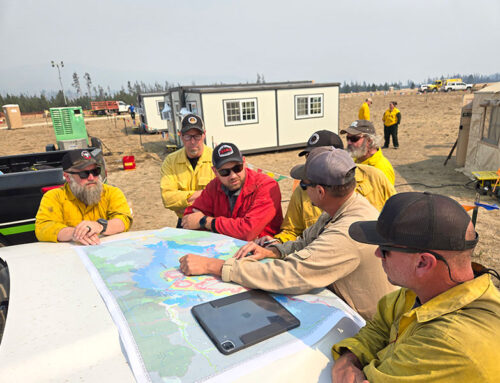ERI’s Native American Forest and Rangeland Management program has been actively partnering with tribal natural resource management programs, organizations, and federal and state agencies to facilitate restorative management of tribal forests and rangelands.
Some recent highlights include:
- The final draft of the Wood For Life (WFL) needs assessment is underway. To better understand the scale and patterns of firewood need and local capacities for firewood distribution among tribal partners, the Forest Service requested that the ERI complete a needs assessment of the WFL program. The special report examines the demand for firewood and capacity for increasing firewood distribution among the Hopi Tribe and Western Navajo Agency. It will be available in December 2024. Some key findings:
- Approximately 90% of households rely on firewood for heating, using 2.5–5 cords (5–10 pickup loads) of firewood per heating season. This translates to a need for 24,000–50,000 cords of firewood for the Hopi Tribe and Western Navajo Agency (22% of the Navajo Nation’s total population) each winter.
- Distribution capacity at the local government level (chapters and villages) depends on having an appropriate site, functional equipment, and sufficient labor.
- Labor is often a limiting factor. Firewood distribution takes substantial effort and coordination even if delivered locally, and local governments have many other duties beyond operating wood banks.
- A recommendation is to increase resources to support this partnership, particularly among tribal nonprofits and local governments that have not yet found funding to increase their wood bank capacity.
- Director Jon Martin and ERI’s Niki vonHedemann have initiated planning of a series of three workshops to increase working knowledge of agreements and grants with the Forest Service to support Wood for Life collaboration. The first workshop will be held in Flagstaff, Ariz., in December. It will bring together tribal governments and nonprofits, Forest Service employees across several regions, the National Forest Foundation, and other partners.
- The program has hired undergraduate forestry student Tynya Kee through the Institute for Tribal Environmental Professionals. Tynya is creating a story map describing the history of Wood For Life, how it functions, and results of the needs assessment.




